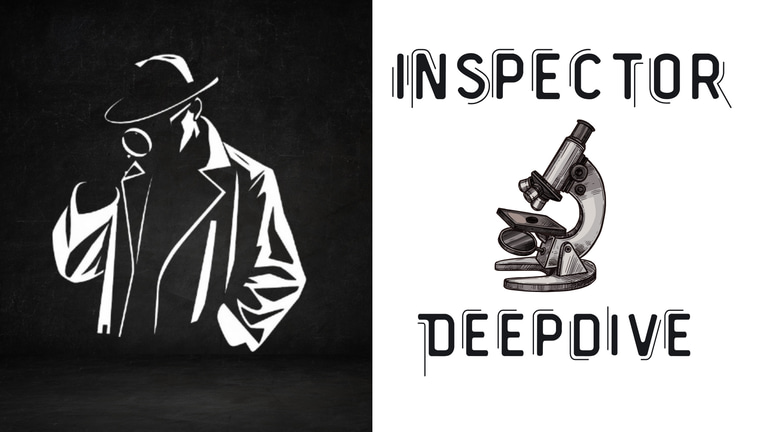
Copper: A Vital Mineral for Energy, Oxygen Transport, and Tissue Health

What is Copper
Copper: an essential trace mineral needed in small amounts for enzyme reactions that support energy production, iron utilization, connective tissue formation, and antioxidant defense.
What copper does in the body
Iron metabolism: helps transport and incorporate iron into hemoglobin for oxygen delivery.
Energy production: supports mitochondrial enzymes that produce ATP.
Antioxidant protection: activates enzymes that neutralize free radicals.
Connective tissue: promotes collagen and elastin formation for healthy skin, bone, and joints.
Nervous system: supports brain function and nerve health.
Metabolic balance: works closely with iron and zinc to maintain immune and metabolic resilience.
Synergistic nutrients
Iron: copper assists iron transport into red blood cells and hemoglobin synthesis.
Zinc: high-dose zinc can impair copper absorption; balance between the two minerals is essential.
Vitamin C: can influence absorption and iron–copper interactions depending on dose and context.
How copper is absorbed and regulated
Absorption site: primarily absorbed in the duodenum of the small intestine.
Excretion: excess copper is excreted in bile and eliminated in faeces; the body tightly regulates stores.
Dietary influences: iron, zinc, and other dietary factors affect absorption; gut health and food matrix matter.
Top food sources of copper (highest → lower per 100 g)
Oysters: highest concentration; excellent source.
Liver (beef or lamb): rich, highly bioavailable copper.
Sesame seeds: strong plant-based source.
Cashews: significant copper content.
Dark chocolate (70%+): copper plus antioxidants.
Whole grains (minimally processed): moderate levels.
Mushrooms (shiitake): useful plant contributor.
Daily recommended intake (RDA) and upper limit (UL)
Adults: 900 micrograms (mcg)/day.
Pregnancy & lactation: ~1,000 mcg/day.
Infants (0–6 months): 20 mcg.
Children (1–13 years): 340–750 mcg depending on age.
Tolerable upper intake level (adults): 10,000 mcg/day (10 mg/day). Exceeding this increases risk of toxicity.
Key factors that influence copper needs
Age and growth: infants and children need more per kg body weight.
Life stage: pregnancy and breastfeeding raise demand.
Health status: malabsorption disorders (e.g., celiac, Crohn’s) increase deficiency risk.
Diet: restrictive diets low in animal foods may require monitoring.
Signs of adequate copper status
Energy: normal stamina and reduced unexplained fatigue.
Skin & hair: healthy skin integrity and hair quality.
Connective tissue: strong joints and wound repair.
Hematologic: stable red blood cell counts and effective oxygen delivery.
Neurological: intact nerve function and cognition.
Symptoms of copper deficiency
Anemia: due to impaired iron utilization.
Fatigue and weakness.
Weakened immunity: more infections or slower recovery.
Bone fragility or osteoporosis.
Neurologic issues: rare but possible.
Pale skin and brittle nails.
How long to correct a deficiency
Mild deficiency: often improves in 2–6 weeks with diet or supplementation.
Severe deficiency: may require 3–6 months of supervised treatment.
Copper supplements: forms and use
Copper gluconate: common, well absorbed.
Copper citrate: high bioavailability; often found in multivitamins.
Copper sulfate: less commonly used; appears in some fortified foods.
Administration tip: take with meals to reduce stomach upset.
Caution: avoid taking copper at the same time as high-dose zinc supplements (they compete for absorption).
Who may benefit from supplementation
People with malabsorption disorders.
Pregnant or breastfeeding individuals with low intake.
Older adults with limited dietary variety.
People on long-term high-dose zinc (>50 mg/day).
Those with diagnosed copper deficiency.
Pros and cons of supplement use
Pros: rapid deficiency correction, supports energy and immunity, helps prevent anemia from poor iron utilization.
Cons: overuse risks toxicity (GI upset, liver damage, neurologic symptoms) and can disrupt zinc and iron balance.
Choosing a quality supplement
Third-party testing: choose brands tested by NSF, USP, or equivalent.
Label check: confirm elemental copper amount.
Form preference: citrate or gluconate for better absorption.
Avoid: unnecessary fillers, artificial dyes, and common allergens if sensitive.
Daily dosage guidelines
General support: ~300–500 mcg/day from food + supplement if needed.
Therapeutic use: up to 1,000 mcg/day under medical supervision.
Upper safety limit: do not exceed 10,000 mcg/day without clinician oversight.
Can you overconsume copper?
Yes: chronic excess can cause nausea, abdominal pain, diarrhea, liver damage, and neurologic symptoms.
Risk source: toxicity is rare from food alone but possible from improper supplement use or rare environmental exposures.
Interactions with medications and supplements
Zinc (>50 mg/day): reduces copper absorption monitor and balance.
Antacids/PPIs: may impair copper absorption over long-term use.
Chelating agents (e.g., penicillamine): used clinically to remove excess copper; not for routine use.
Lifestyle and environmental factors affecting copper levels
Smoking: associated with reduced copper.
Stress and intense activity: may raise metabolic demand.
Gut health: poor digestion lowers nutrient uptake.
Aging: absorption efficiency can decline.
Cooking and processing effects
Boiling: may leach copper into cooking water—reuse liquid when possible.
High heat: slight losses, but most copper is retained with minimal processing.
Processing: refined foods tend to have lower copper than whole foods.
Myths and Misconceptions
“Copper toxicity is common”: false usually linked to excessive supplements or rare genetic disorders.
“All copper sources are equal”: false animal sources typically have better bioavailability.
“More copper improves immunity”: false balance with zinc and iron is critical.
How to track intake and assess status
Diet tracking: use nutrition apps or food diaries focusing on liver, shellfish, nuts, seeds, and dark chocolate.
Lab testing: serum copper or ceruloplasmin can be measured but are influenced by inflammation—interpret with clinical context.
Clinical review: evaluate symptoms, diet, and risk factors with a healthcare provider.
Recent research highlights (as of 2025)
Neuroprotection: emerging evidence suggests optimal copper supports brain health and may relate to reduced age-related cognitive decline.
Mitochondrial function: copper supports enzymes crucial for ATP production and metabolic health.
Biofortification: efforts to increase copper in staple crops aim to reduce deficiency in low-income regions.
Copper-based antimicrobials: expanding use for infection control on surfaces and filters.
Final takeaways
Copper: essential for red blood cell production, energy metabolism, connective tissue integrity, and antioxidant defense. Best obtained from a varied diet rich in oysters, liver, sesame seeds, cashews, and dark chocolate. Use supplements only when deficiency is confirmed or risk is high, balance copper with zinc, and never exceed the upper limit without medical supervision.
FAQ
Is daily copper supplementation necessary? Not for most people who eat varied diets; consider supplementation only if at risk or deficient.
Can high zinc cause copper deficiency? Yes; long-term high-dose zinc can reduce copper absorption and cause deficiency.
What should I do if I suspect deficiency? Consult a clinician for dietary assessment and possible lab testing; treat under supervision.
Copper: A Vital Mineral for Energy, Oxygen Transport, and Tissue Health
info@inspectordeepdive.com
© 2025 food.InspectorDeepDive.com. All rights reserved. Content may not be copied or republished without permission.
This article is for informational purposes only. InspectorDeepDive.com does not provide medical advice. Always consult a licensed healthcare provider before making dietary or health decisions.
